Young people prefer cars over green transport options
Some worrying news: young people find the prospect of driving cars more attractive than other modes of travel that are kinder to the environment, according to research conducted by a researcher at the University of the West of England. The results indicate there is a lot of work to do on making public transportation and even cycling 'sexier'.
Dr Tilly Line has just completed her PhD entitled ‘The attitudes of young people towards transport in the context of climate change.’ Dr Line’s work examined how young people are influenced by knowledge about climate change when it comes to making choices about how they will travel when they become adults. The study concentrated on the views of young people aged between 11 and 18 years and the findings found an overwhelming desire by young people to drive.
For example, one answer may be to promote cycling as a signal of success and ‘being cool’, rather than promoting the environmental benefits of this behaviour.
The importance of climate change shouldn’t be forgotten however. It isn’t the case that young people dismiss this issue, but more that they feel powerless to make a difference. Dr Line found that the young people think of climate change as being something that will not be felt until far off in the future and that there is little that they can do as individuals:
 energy :: sustainability :: biomass :: bioenergy :: petroleum :: transportation :: public transport :: bicycle :: car culture :: climate change ::
energy :: sustainability :: biomass :: bioenergy :: petroleum :: transportation :: public transport :: bicycle :: car culture :: climate change ::
References:
Bristol UWE: Young people choose cars above greener transport options - December 04, 2008.
Article continues
Dr Tilly Line has just completed her PhD entitled ‘The attitudes of young people towards transport in the context of climate change.’ Dr Line’s work examined how young people are influenced by knowledge about climate change when it comes to making choices about how they will travel when they become adults. The study concentrated on the views of young people aged between 11 and 18 years and the findings found an overwhelming desire by young people to drive.
Specific attention was give to how climate change considerations affect these intentions. Overall it was found that the participants have a general understanding of the link between transport and climate change, but when it comes to their attitudes towards different modes, they place higher value on identity, self-image, and social recognition than the environment. It is this that explains their positive attitudes towards the car and driving in favour of alternative modes. For example, the participants pointed to learning to drive as “a mile-stone in teenage life” - something that everyone does at seventeen. They also pointed to the car as a symbol of social status and the importance of their role as a driver in their friendship groups. - Dr LineSome comments from young people who took part in the study:
Limousines, they’re like a really special thing for like if you’re posh or you have lots of money. That’s why I want to have one of them. - 11 yr-old female participantDr Line adds that, although it is recognised that transport policy makers are likely to require an understanding of the degree to which these values and attitudes are universally held among young people, it is suggested that policy aimed at reducing the public’s reliance on the car and increasing their use of alternative modes, should recognise such values, particularly in relation to soft policy measures (including marketing activities) targeting the socio-psychological motivations for travel choice.
Me and my friends share lifts to school in the mornings. Now our friends, all of our group have actually passed, we take it in turns to drive places...we share everything. - 18 yr-old female participant
For example, one answer may be to promote cycling as a signal of success and ‘being cool’, rather than promoting the environmental benefits of this behaviour.
The importance of climate change shouldn’t be forgotten however. It isn’t the case that young people dismiss this issue, but more that they feel powerless to make a difference. Dr Line found that the young people think of climate change as being something that will not be felt until far off in the future and that there is little that they can do as individuals:
 energy :: sustainability :: biomass :: bioenergy :: petroleum :: transportation :: public transport :: bicycle :: car culture :: climate change ::
energy :: sustainability :: biomass :: bioenergy :: petroleum :: transportation :: public transport :: bicycle :: car culture :: climate change :: There are little things you can do, but nothing that will change the world, because individually we’re only little people. - 11 yr-old female participantThe participants also suggested that although they receive information about what climate change is, they lack information about what they can do to tackle it:
I’d like to change it. But I know I wouldn’t be able to, just me. If I really tried I know that I would just be wasting my life trying to do one thing I knew I couldn’t change. - 11 yr-old female participant
You don’t really get told what to do. …Instead of just saying ‘we’re polluting the world’, tell us what we can do about it. - 11 yr-old male participantDr Line concludes: "On a positive note, I found that a number of the young people welcomed the idea that hard policy ideas leading to enforced travel behaviour away from reliance on cars would lead to a change in behaviour. But that this would only be possible if walking, cycling and public transport was easily accessible and reliable. This was even the case amongst those participants already driving and it seemed to stem from the belief that such action would empower more people to attempt to tackle climate change through changes in their travel behaviour as everyone would have to behave in the same way."
I think some people may want to help the environment but they don’t do anything about it but then again if they were forced to then they’d have to. ...I mean eventually it’s going to happen anyway. It’s going to come to a point in time where there’s going to be a ban on cars or something …there’s just going to be no feasible way they can have all the cars on the road. - 18 yr-old male participant
References:
Bristol UWE: Young people choose cars above greener transport options - December 04, 2008.
Article continues
 --------------
--------------
 Taiwan's Feng Chia University has succeeded in boosting the production of hydrogen from biomass to 15 liters per hour, one of the world's highest biohydrogen production rates, a researcher at the university said Friday. The research team managed to produce hydrogen and carbon dioxide (which can be captured and stored) from the fermentation of different strains of anaerobes in a sugar cane-based liquefied mixture. The highest yield was obtained by the Clostridium bacterium.
Taiwan's Feng Chia University has succeeded in boosting the production of hydrogen from biomass to 15 liters per hour, one of the world's highest biohydrogen production rates, a researcher at the university said Friday. The research team managed to produce hydrogen and carbon dioxide (which can be captured and stored) from the fermentation of different strains of anaerobes in a sugar cane-based liquefied mixture. The highest yield was obtained by the Clostridium bacterium.

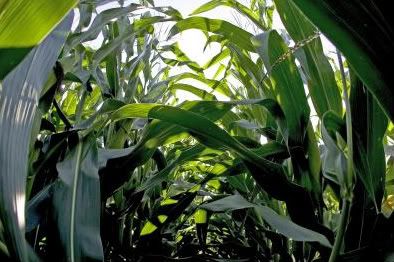
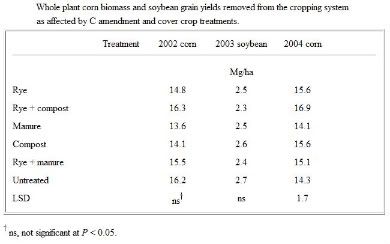
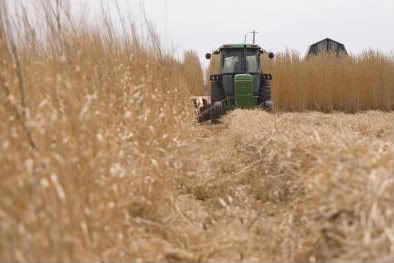
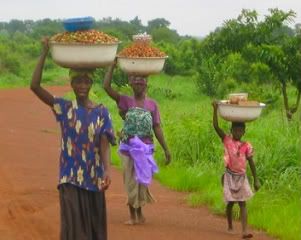 The Consultative Group on International Agricultural Research (CGIAR), the world's leading agricultural research group, is calling for specific investments in African agriculture to make hundreds of millions of people there less vulnerable to volatile world markets, economic crises and climate change. Investing in Africa's agriculture and focused crop research offers tremendous returns, the group says. The current crises offer an excellent opportunity to make socially relevant investments that could help the poor in a way that no other investment can.
The Consultative Group on International Agricultural Research (CGIAR), the world's leading agricultural research group, is calling for specific investments in African agriculture to make hundreds of millions of people there less vulnerable to volatile world markets, economic crises and climate change. Investing in Africa's agriculture and focused crop research offers tremendous returns, the group says. The current crises offer an excellent opportunity to make socially relevant investments that could help the poor in a way that no other investment can.
 Although Africa contributes significantly to global greenhouse gas (GHG) emissions from sources other than fossil fuels, it could be absorbing more carbon from the atmosphere than it puts back in, according to
Although Africa contributes significantly to global greenhouse gas (GHG) emissions from sources other than fossil fuels, it could be absorbing more carbon from the atmosphere than it puts back in, according to  What matters most though, Valentini stresses, is the balance between carbon captured through photosynthesis by Africa's vast expanse of forests and savannas, and carbon released into the atmosphere as a result of deforestation, fires and forest degradation — Africa's ‘carbon cycle'.
What matters most though, Valentini stresses, is the balance between carbon captured through photosynthesis by Africa's vast expanse of forests and savannas, and carbon released into the atmosphere as a result of deforestation, fires and forest degradation — Africa's ‘carbon cycle'.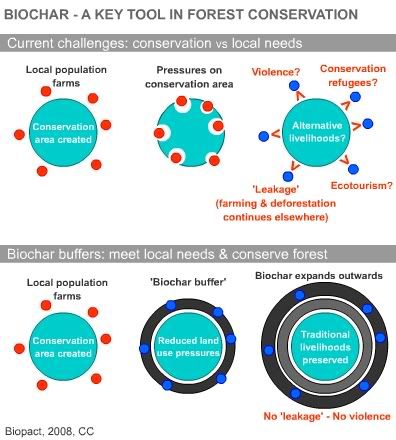







Saturday, December 06, 2008
Plants display 'molecular amnesia': important discovery for genomics research and quest for better crops
The findings are important to develop a better understanding of gene regulation in the continuing quest to breed enhanced crops that produce higher yields, are more resistant to disease and can better tolerate environmental stress – all keys to helping improve the world's food, fiber, fodder and fuel supply. But perhaps even more important, the discovery may lead to new insights into how epigenetic processes work in the human body, which could assist in developing new ways of modifying our genetic makeup to help us avoid such diseases as cancer.
Although nearly every cell in our body is genetically identical, the researchers explained, each cell type expresses a distinct set of genes. Changes to the proteins around which DNA is wound are called "epigenetic" modifications, because they alter patterns of this gene expression without changing the actual DNA sequence. However, like changes in DNA sequence, epigenetic modifications can be passed on from parent cell to daughter cell, ensuring each cell line has the proper characteristics consistently over many generations.
This process must be repeated each generation, and there is good evidence in animals that, during early development, there is a wave of epigenetic reprogramming that effectively "resets" this system. Some genes, it seems, must be more actively reset than others. And genes that do the same thing in every cell, regardless of tissue type, may not have to be reset at all.
One kind of gene is quite distinct from all of the others, because it is nearly always epigenetically inactivated. These are the genes carried by transposons, or "jumping genes." Transposons are mutagens, genes that can modify their host cell in different ways, and lead to a predisposition to cancer, for example.
The researchers' experiments with maize suggest the propensity to maintain epigenetic states can vary depending on the position of the transposons within the genome.
Many organisms, from worms to humans to plants, have learned to tame transposons by epigentically "silencing" them: if they can't express their genes they can't jump. If they can't jump for long enough, their DNA sequence slowly accumulates errors, and they become molecular fossils. Most transposons in most organisms are silenced in this way, but some remain quite active.
In previous studies from the laboratory of two of the article's authors, UC Berkeley professors Damon Lisch and Michael Freeling, with the support of the National Science Foundation at UC Berkeley, epigenetic silencing was triggered in maize. Once triggered, the maize plant "remembers," and keeps the transposon "silenced" generation after generation, even after the trigger is lost:
"However, we have found that at some positions in the genome, this is not the case. At these positions, although the trigger works fine, and the transposon is silenced, once the trigger is lost, the transposon reawakens," said Jaswinder Singh, a professor in the Plant Sciences Department at McGill University, and lead author of the new article.
This "molecular amnesia" has never before been documented in plants and no one has seen it associated with a particular position in the genome of any species before. These data suggest the epigenetic landscape of plant genomes may be more subtle and interesting than previously thought, with the ability to remember epigenetic silencing varying depending on position.
"This may relate to the degree to which a given gene or group of genes must be reprogrammed each generation," Singh said. "We can now use transposons to probe for variations in the epigenetic landscape of the maize genome. It may turn out that forgetting can be as important as remembering. Our findings suggest that erasure of heritable information may be an important component of epigenetic machinery."
References:
Singh J, Freeling M, Lisch D (2008) "A Position Effect on the Heritability of Epigenetic Silencing", PLoS Genet 4(10): e1000216. doi:10.1371/journal.pgen.1000216
Article continues
posted by Biopact team at 11:22 AM 0 comments links to this post
